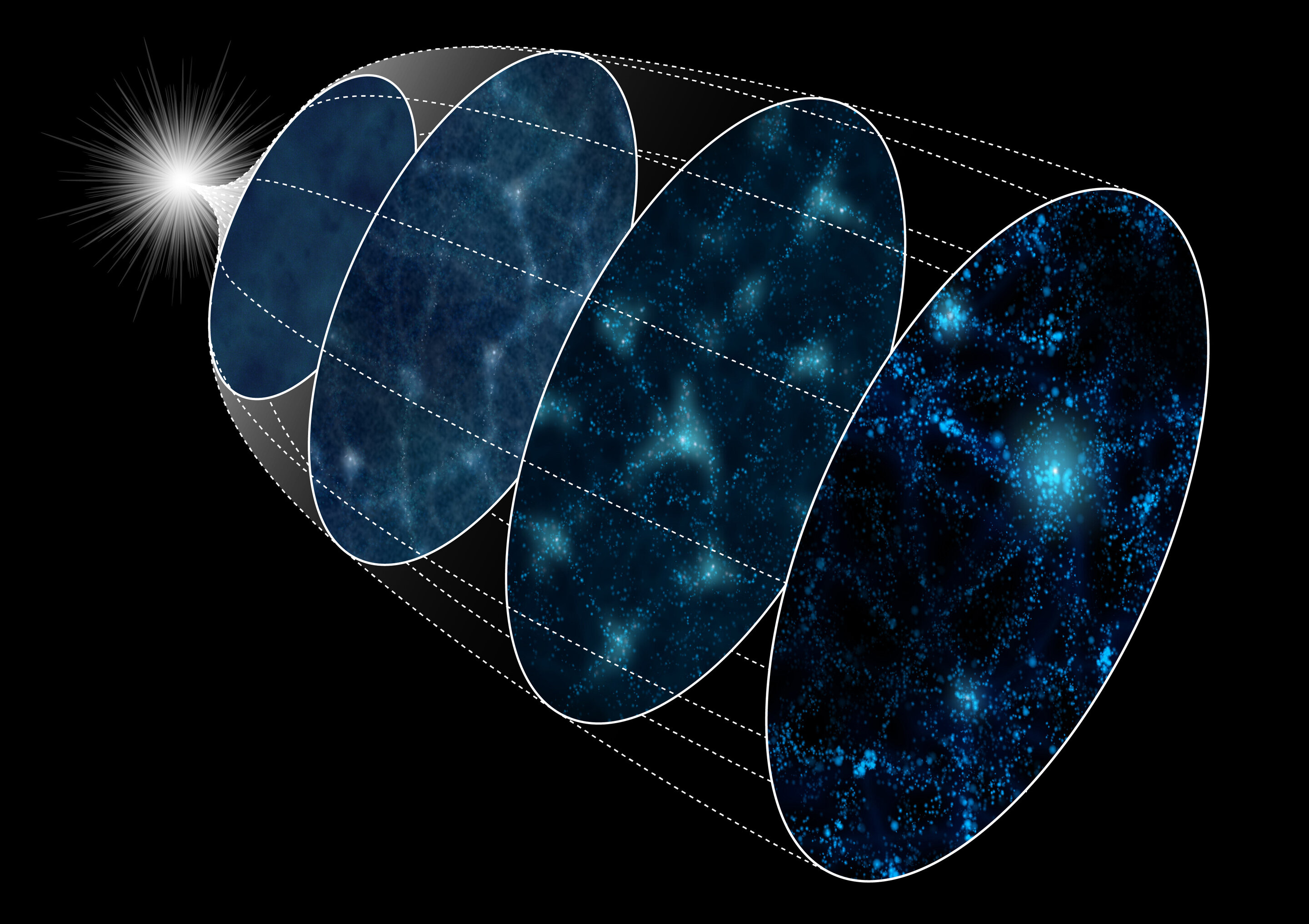
[ad_1]

Figure 1: Schematic diagram of the evolution of the universe from inflation (left) to the present (right). The reconstruction method returns to the evolution from right to left on this illustration to reproduce the primordial density fluctuations of the current distribution of galaxies. Credit: Institute of Statistical Mathematics
Astronomers have tested a method of reconstructing the state of the early universe by applying it to 4,000 simulated universes using the ATERUI II supercomputer at the National Astronomical Observatory of Japan (NAOJ). They found that with new observations, the method can set better constraints on inflation, one of the most enigmatic events in universe history. The method can shorten the observation time required to distinguish between various theories of inflation.
Right after the universe was created 13.8 billion years ago, it suddenly grew over 1 trillion trillion times in size in less than a trillion trillion microseconds, but no one knows how nor why. This sudden inflation is one of the most important mysteries in modern astronomy. Inflation should have created primordial density fluctuations that would have affected the distribution of the development of galaxies. Thus, mapping the distribution of galaxies can exclude inflation models that do not match the observed data.
However, processes other than inflation also impact the distribution of galaxies, making it difficult to get information about inflation directly from observations of the large-scale structure of the universe, the cosmic network comprising countless galaxies. In particular, the gravitational growth of groups of galaxies can mask primordial density fluctuations.
A research team led by Masato Shirasaki, assistant professor at the NAOJ and the Institute for Statistical Mathematics, applied a reconstruction method to go back in time and remove the gravitational effects of the large-scale structure. They used ATERUI II, the world’s fastest supercomputer dedicated to astronomical simulations, to create 4,000 simulated universes and make them evolve through gravitational growth. They then applied this method to see how well it reconstructed the starting state of the simulations. The team found that their method can correct for gravitational effects and improve constraints on primordial density fluctuations.
“We have found this method to be very effective,” says Shirasaki. “Using this method, we can verify inflation theories with about a tenth of the amount of data. This method can shorten the observation time required in future galaxy missions such as SuMIRe by the telescope. Subaru by NAOJ. “
These results appeared as Masato Shirasaki et. Al. “Constraining primordial non-Gaussianity with the bispectrum of the galaxy post-reconstructed in Redshift space”, in Physical examination D January 4, 2021.
The primordial black holes and the search for dark matter in the multiverse
Masato Shirasaki et al. Constraint of primordial non-Gaussianity with the bispectrum of the galaxy post-reconstructed in redshift space, Physical examination D (2021). DOI: 10.1103 / PhysRevD.103.023506
Provided by the Center for Computational Astrophysics
Quote: Supercomputer Returns Cosmic Clock (2021, February 16) retrieved February 16, 2021 from https://phys.org/news/2021-02-supercomputer-cosmic-clock.html
This document is subject to copyright. Other than fair use for study or private research, no part may be reproduced without written permission. The content is provided for information only.
[ad_2]
Source link